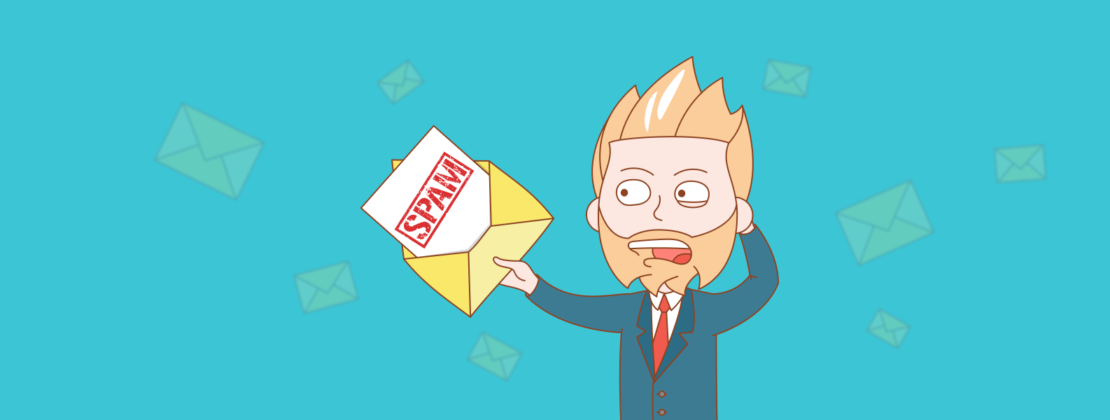They suggest suspicious 100% discounts, new Instagram followers, unshakable health, and a $500,000 inheritance from a relative you’ve never heard of. They are intrusive, annoying, harmful, and always unwanted.
How come we’re still getting bombarded with spam emails in 2020? And what can we do about it? Let’s find out where they come from and how to stop spam emails, once and for all.
Content:
- Why you should always get rid of spam emails
- Where do spam emails come from?
- How to prevent spam emails
- Create another email address
- Help algorithms by reporting spam and indicating legit emails
- Do not reveal your email address on social media
- Find out who shares or sells your email address
- Never interact with spam emails
- How to stop getting spam emails and regain control of your inbox
- How to deal with tons of promotional emails
- How to protect your email address from spammers
- Keep your own emails from being marked as spam
Why you should always get rid of spam emails
Spam and phishing emails account for 50–54% of global email traffic. The COVID-19 outbreak boosted scam activity — cybercriminals started to imitate pandemic-related notifications and offers. The largest share of spam (51%) in 2020 was recorded in April. Many inboxes are drowning in this stream of junk mail, and yours might be affected too.
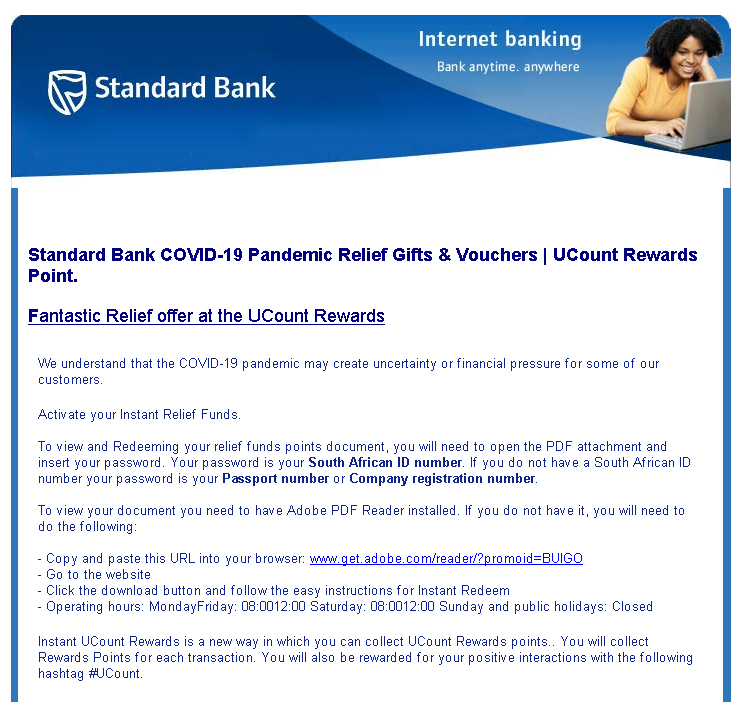
But spam is much worse than just unsolicited emails. Your inbox becomes cramped and unmanageable. It is getting harder to navigate through the clutter; important emails can be lost in the abyss. For example, you may miss a notification from your bank or click on a malicious link by accident while searching for an old message from your colleague.
So, don’t let spam emails pile up — a potentially harmful habit in every way. After all, data storage is cheap, but all those extra terabytes of digital trash keep data centers running and misuse energy.
Where do spam emails come from?
So-called bot-crawlers (email harvesters or spiders) scan web pages and gather contact data. They look for specific symbols, like “@,” or format, like “username1993[at]domain.com.” It doesn’t matter where exactly your address is placed — the bot will find it even in the footer of a page. This is one way for spam to infiltrate your inbox.
Another way is that a bot goes through all the possible combinations of letters and “guesses” your email address. This is more likely to happen if you have a unique corporate domain. There are also viruses that scan files on infected computers and extract personal information as well. Once your address has made it to one spammer database, it will spread across others.
Your email address can also be sold or simply shared. Although anti-spam laws prohibit operators of websites from direct harvesting or selling mailing lists, the specific rules lack clarity. As a result, many websites share your personal information with third-party service providers for “business purposes.” Next time, before signing up, open the website’s privacy policy or terms of service, and look for keywords like “affiliates,” “partners,” and “partner companies.” This way, you will find out exactly how your email address may be shared.
How to prevent spam emails
Here are some proven methods to nip all scammers’ attempts in the bud.
Create another email address
Business in the front, spam in the back. Use one address purely for communications with colleagues, partners, and organizations, while the other one address is for collecting promotional emails, offers, confirmation emails, and so on. The latter will be useful for registering and subscribing, online purchases. This method ensures that promo emails are separated from your business-related conversations.
Help algorithms by reporting spam and indicating legit emails
Check your spam folder at least once a week. Anti-spam tools are not yet perfect, so even real emails end up there sometimes. Most anti-spam tools use machine learning to recognize spam. You help them learn when you mark spam as spam and indicate real emails sent to your spam folder by mistake.
Do not reveal your email address on social media
…unless it’s necessary.
We all use social media and promo sites to communicate with friends and customers and attract attention to our work, so there is no point in keeping your contacts completely out of sight. But if there are other ways to reach out to you available, such as DMs on Instagram, you may want to only give your email address to a narrow circle of people.
Find out who shares or sells your email address
Gmail allows you to receive email addressed to any variation of your email address following a plus sign following your user name. For example, username+website@gmail.com, where “website” is the name of whatever website you’re signing up for. It looks like this:
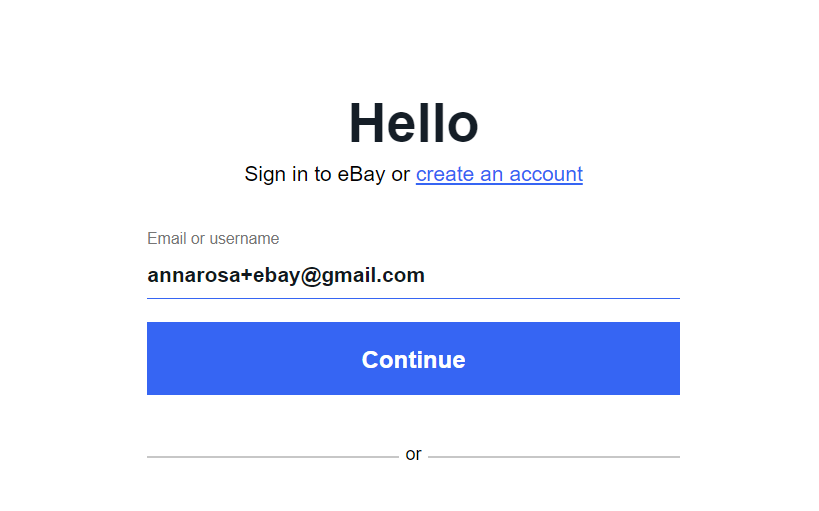
The text following your address will remind you where these emails are from originally. Unfortunately, not every website will recognize a plus sign as a valid character.
Never interact with spam emails
Do not respond, click any links, or open any content within an unsolicited email. Ideally, do not even open the email. They may contain a tracking pixel that will notify scammers that your address is both active and monitored. Luckily for us, most email clients block images in spam emails by default.
You can recognize spam at first glance: it comes from suspicious addresses, has tacky subject lines, and includes tons of superfluous exclamation marks.

How to stop getting spam emails and regain control of your inbox
Email clients have gotten smarter. In fact, in most cases, you don’t need a special spam blocker at all. Google claims that it is able to stop 99.9% of spam messages and mistakenly classify only 0.05% of incoming mail as spam, thanks to AI-based algorithms.
You may have noticed the technology still has some flaws: sometimes your important messages end up in this 0.05%. And sometimes commercial emails interrupt work-related conversations. There are filters, labels, and other settings that allow you to control and categorize the stream of emails you receive.
Gmail filters remain the most effective way of organizing your ever-sprawling Gmail inbox:
- Open a message from a service or an online shop that is especially prolific in sending emails.
- Click the three-dot icon in the toolbar and choose “Filter messages like these.”
- Choose the keywords or any other criteria for this particular filter.
- Create a special label for these messages, so that they won’t clutter your inbox, delete them right away, or save them from landing in the spam folder if you still want to read them.
Gmail suggests different options for dealing with abundant emails:
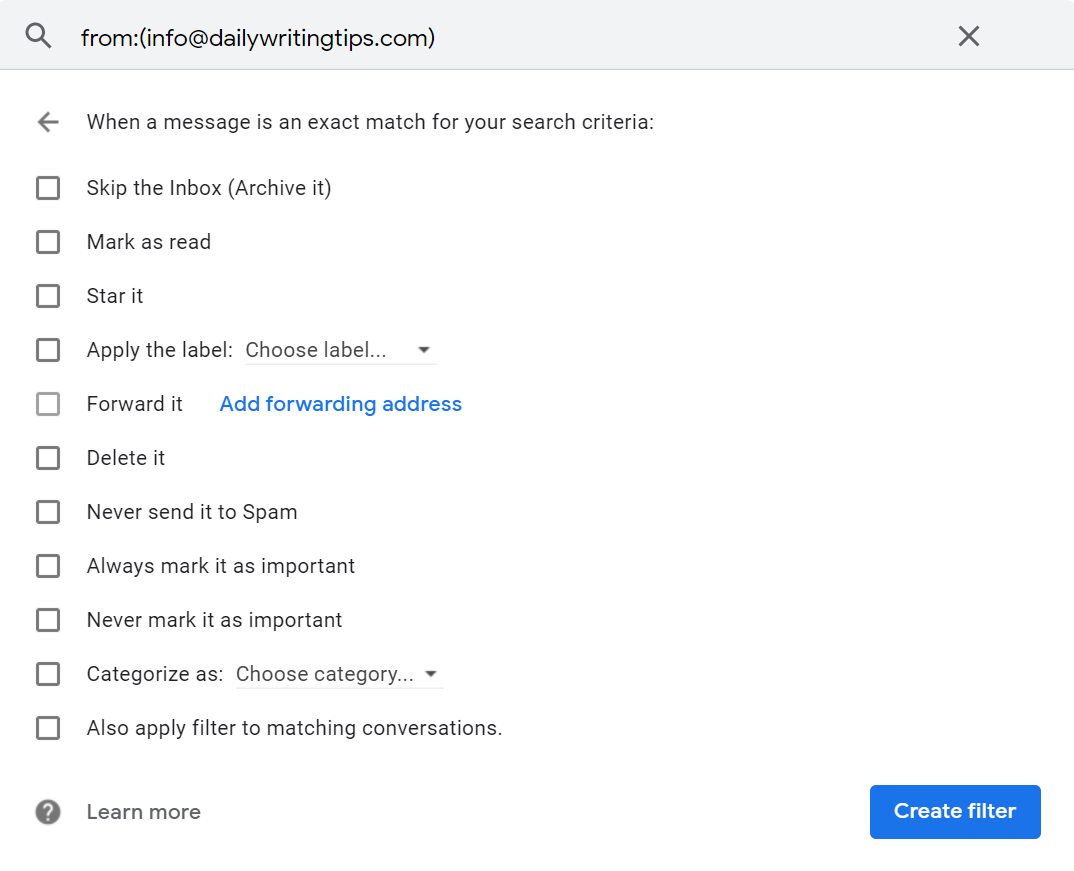
There is another three-dot icon in the header of any email. It offers you more options: you can block the sender, or report spam or phishing. By doing this, you’ll help algorithms detect spam more precisely.
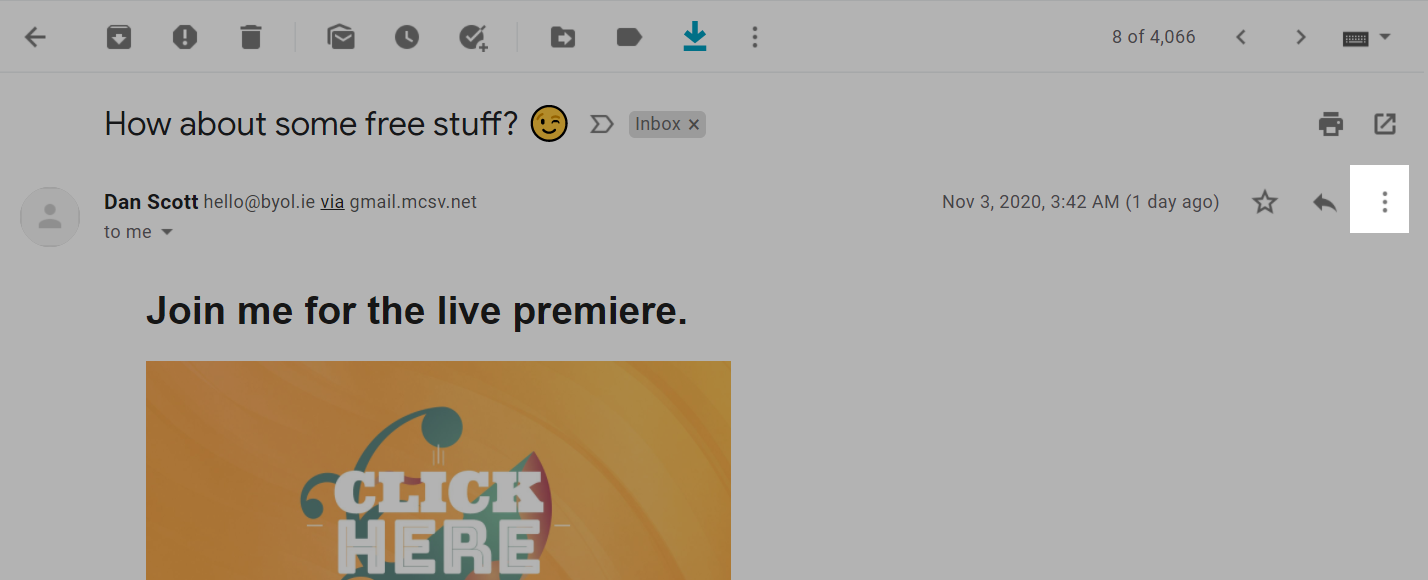
How to deal with tons of promotional emails
Many brands have turned their email campaigns to full blast and send at least one email a day. While some people like to receive all the special offers, others prefer to limit the number of commercial emails they receive.
If you feel overwhelmed by the number of promo emails you get, remember the rule of thumb: it is not spam, so do not deal with it as if it were spam. By pressing “It’s spam,” you’re making it difficult for the brand to reach out to their customers. Because of your impatience, someone else may not receive an important notification or a nice discount from this website. Marketers spent time carefully writing their content — don’t make their efforts meaningless.
Just click “Unsubscribe” in the footer of any email to manage your subscription. In your Gmail inbox, you will find this button next to the sender’s address as well. It is always possible to unsubscribe even if you can’t sign in to the website anymore.

How to protect your email address from spammers
We’ve mentioned website crawlers that harvest emails — there are a few ways you can hide your email address from them. It’s called email obfuscation, and you can use it on your personal website.
For example, imagine you are a motion-designer and you have a portfolio website. You still want your potential clients to be able to reach out to you, but you don’t want to lose these valuable offers and connections in a pile of spam emails. The solution is to make your email address slightly less visible for bots.
The benefits of this process aren’t always noticeable because it’s becoming harder to outsmart all existing crawlers. But if there’s a real chance to minimize the number of spam emails, why not use it?
Here are some reliable ways to secure your email address without affecting the user experience:
- Adding reCAPTCHA on a website. Thankfully, users do not need to look for cars and road signs on blurry pictures anymore. The new reCAPTCHA technology is just a clickable button confirming that a user is a real person. It loads in two seconds, so there is almost no delay.
- Using contact forms. This is an elegant way to communicate with your users and customers and stop spam emails. The downside is that not everyone likes to fill out these forms, also usually it’s impossible for a user to check out the content of this form after it’s been sent.
- JavaScript obfuscation. The method implies producing a clickable email link for users while obscuring the address from crawlers. In the source code seen by harvesters, the address is scrambled, encoded, or otherwise hidden. But this method can trip up an inexperienced user who doesn’t know Java.
Feedback forms and contact forms seem like the best choice: they are absolutely user-friendly and convenient, and there are plenty templates to choose from provided by different online form builders. Contact forms also make your personal website look much more professional, which is crucial for making a good first impression online.
And here are some outdated methods of email obfuscation you should avoid using:
- Putting an email address on the picture and placing it in the footer. There are spambots that are able to convert image elements into text using optical character recognition. So, this approach just kills anyone’s desire to contact you because you have intentionally made it harder for them. Also, this method excludes users with vision impairment and anyone using a screenreader.
- Spelling out an address. Don’t sacrifice your potential clients in order to stop spam emails. Bots can easily decipher “user name at domain dot com.” It will just make the contacts look messy and less readable.
- Replacing @ with [at]. Email harvesters have been familiar with this trick for at least 10 years. More refined spambots can even search for alternative spellings such as “(at).” And regular users lose the convenience of clicking on the address to automatically send an email.
- Creating an extremely long address containing different numbers. If you use emails to communicate with people, keep it user-friendly. No need to make it look like a password and make users guess what stays behind this elaborate address — it should be easy to spell and remember.
Keep your own emails from being marked as spam
We are not doomed to get spam indefinitely. But algorithms are only striving for perfection, so there is still some room for improvement. Make sure your own emails do not fall into the same bottomless pit of spam.
Create your email campaign using SendPulse and let the built-in smart spam checker do the rest. This new tool analyzes your campaign and gives tips on which element to improve. It also warns if there is a probability that your email is destined for the spam folder. This checker is available in a free plan — give it a try!
